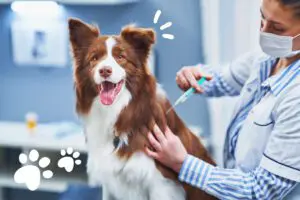
Is the colour of your cat’s coat related to its personality?
¿Se ha preguntado alguna vez si el color del pelaje de su gato está relacionado con su personalidad?

Often, we overlook the possibility that our furry friends may face this disease, but it is essential to be vigilant for signs and symptoms that could indicate the presence of diabetes in our pets. Here, we tell you everything you need to know about diabetes in dogs and cats.
Closely observe your furry friend and pay attention to the following signs:
If you observe one or several of these symptoms in your dog or cat, it is crucial to consult a veterinarian immediately. Early detection of diabetes in dogs and cats is essential for ensuring effective treatment and avoiding serious complications. Your veterinarian will conduct an examination to confirm the diabetes diagnosis.
Although diabetes is a chronic disease, it doesn’t mean your furry friend can’t have a good quality of life and be happy.
The treatment of diabetes in dogs and cats is based on two main pillars: insulin administration and changes in diet and exercise. It is essential to have the guidance and supervision of a veterinarian.
A diet with low carbohydrate content but rich in fiber is generally recommended. Additionally, it is essential to establish regular feeding schedules and avoid excessive consumption of processed treats or fatty foods. If you want to reward your dog, it is advisable to choose natural dehydrated treats, which offer more benefits to your pet than processed ones.
Remember that constant monitoring and regular visits to the veterinarian are crucial to assess the response to treatment and adjust insulin doses if necessary. Your veterinarian can also provide specific guidelines on feeding and monitoring glucose levels at home.

The causes of diabetes can vary, but genetics and overweight are significant risk factors. Like in humans, diabetes in dogs and cats occurs when the pancreas does not produce enough insulin or when the body cannot effectively use the insulin it produces. This leads to an increase in blood sugar levels and an imbalance in glucose metabolism.
Treatment is complex, expensive, and prolonged, so prevention is always the best remedy. Helping our furry friends have a healthy and balanced diet, as well as keeping them active and in shape, can prevent them from developing various diseases.
We can opt to improve the diet of our furry friends with systems like the BARF diet, based on natural ingredients without chemical additives or artificial preservatives. These foods are usually rich in essential nutrients such as vitamins, minerals, and antioxidants that strengthen our dogs’ immune system and promote a balanced metabolism. Learn more about a healthy diet for your furry friend here.
In conclusion, diabetes in dogs and cats is a reality that we must take seriously, as it is a disease whose incidence has increased in recent years according to Animal’s Health. Early detection, accurate diagnosis, and proper treatment are essential to ensure the health and well-being of our furry friends. Do not hesitate to consult your veterinarian if you observe any signs of diabetes in your dog or cat.
By doing so, you will be taking proactive steps to provide your furry friend with the attention and love they deserve.

¿Se ha preguntado alguna vez si el color del pelaje de su gato está relacionado con su personalidad?

Planning our holidays is always complicated. Booking transport, hotel, buying tickets… A real gymkhana! If we add travelling

Today is a special day in Spain: it’s Mother’s Day! This day is dedicated to celebrating all the
Receive a 10% discount for subscribing.
Receive offers, news and tips for your furry friend.
*On orders over 39€ in Spain.
MAIKAI is a registered trademark by Mili Regdan International S.L.
Payment methods